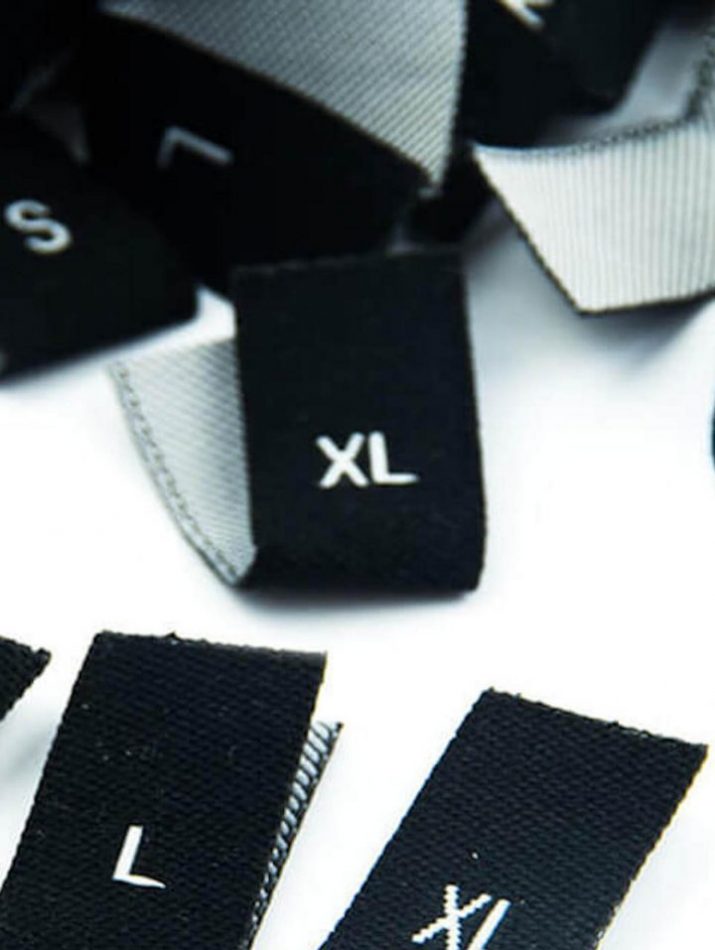
If you're anything like us, you must find the clothing industry fascinating. The development from wearing one garment made of whatever materials you could weave and sew with, to our modern day en masse factory produced clothes is insane! What's even more interesting is how clothing sizes were developed and have subsequently changed over the years. In this post, we're looking into the way clothing sizes were originally decided and what's changed today.
We can safely say that 'one size fits all' is a total myth but what do you do when you're a size 18 and go and try on your new clothes that are size 18 and then they don’t fit!
Why do clothes fit some women and not others, even when they wear the same clothing sizes?
Body shape is the answer.
No two women (or men) look the same. Our bodies are all different in so many diverse ways! Some people have a big bum or big breasts, others are flat chested; some are tall, some are small and then some don’t have much of a bum at all.
Having a standard sizing system that accommodates all these varieties seems frankly quite absurd when there is such a variety of body shapes, so how did we end up with this system in the first place?
Clothing used to be made to measure and you would need to go to a dressmaker/tailor to get measured before they made clothes purposefully for you. This was a very time-consuming and expensive - can you imagine trying to buy a dress from Missguided for the weekend but having to be measured for it first?!
Ready to wear clothing became available with industrialisation (the first mass-produced clothing was actually military uniform in 1800) and as a result of this, a standardisation of sizing was needed.
Up until the 1940s, clothing sizes were determined in a similar fashion to the sizing system used by the military. This method, initially developed for men, was based on only one measurement: the chest. This worked perfectly well if you had a ‘straight up and down’ body shape but as you can imagine, it became quite problematic when it translated to the sizing for women’s clothing.
As men’s clothing was sized for chest measurements, the manufacturing system deemed that it would make perfect sense to do exactly the same for women and took their measurements from the bust.
Clearly a recipe for disaster, as this didn't account for feminine curves or even the fact that some women are flat chested whilst others have a large bust. The number of returns from mail orders was even bigger than today, so many fashion retailers suffered huge financial losses.
In the 1940s an American study commissioned by the Depression-era Works Progress Administration, conducted a nationwide survey of women’s measurements in order to finally come up with a standardised clothing size system.
The study included 15,000 women and took a total of 59 measurements from each woman in an effort to find a solution to the sizing problem. Alas, the data didn’t seem to add up.
Two of the ideas proposed included:
The height/weight ratio:
This idea was quickly dismissed as asking women to impart with information of how much they weigh every time they wanted to buy new clothes was considered rude.
Upper body measurement/height/lower body measurement :
This much more mathematical system went quite a way in determining the modern sizing system. However, this formulaic method created 27 different sizes (!) and was dismissed as being too large a number.
The Shelton/O’Brien study (as it is known today) was pretty revolutionary in the world of clothing sizes. But, the survey was mostly done on a volunteer basis and meant that the women who were included were often of lower socioeconomic statuses (attracted by the participation fee) and were also mostly white women. Women of colour who volunteered did have their measurements taken but these were apparently discarded and not used in the resulted findings. Talk about misrepresentation!
Almost a decade later, the National Bureau of Standards took the findings of the Shelton/ O’Brien study and developed them into the system that we know today.
The sizes were derived from bust measurements with hip and waist measurements based on the proportions of an hourglass figure (the classic Marilyn Monroe type figure that was highly fashionable at the time). These sizes were then represented by an even number from 8 to 38 in the UK and 0-30 in the US.
Misrepresented by the clothing retailers?
This means that the clothing sizes widely aren't actually representative of women's body shapes at all. Only 8% of women have an hourglass shape (like Kelly Brook) and 50% of women in the UK a size 16 and over.
The majority of women are therefore being grossly misrepresented by clothing retailers and the fashion industry. Tie this in with our society's obsession with making women feel like they constantly need to look and be a certain way and it's no wonder so many of us struggle with low self-esteem.
It's also no wonder that so many retailers to this day have such high rates of return. Clothes do not fit because they are not accurately measured and there is no standardisation for sizes across the board. Throw in the XS-XL sizing and you've got more confusion and less standardisation to boot. How many times have you returned an item of clothing because it didn't fit right? How many times have you been two clothes sizes bigger/smaller depending on which shop you went into? It's a daily struggle for women of all shapes and sizes, but especially when you're considered 'plus size'.